Exploring Ming Dynasty Clothing: The Emperor’s Ceremonial Robe

Ming Dynasty Emperor Robe
The ceremonial robe (gunmian) was the go-to outfit for Ming emperors, crown princes, princes, and their heirs during grand rituals like worshiping heaven and earth, ancestral temples, harvest gods, coronations, New Year’s, winter solstice, imperial birthdays, and ennoblements. The emperor’s version was the fanciest, set in the first year of Hongwu (1368), tweaked in Hongwu 16, 24 (per Ming Veritable Records), and Yongle 3 (1405), with a big overhaul by Emperor Jiajing in 1530, locking in the final style of this Traditional Chinese ceremonial clothing. This guide dives into the iconic Yongle 3 design, the most representative and longest-used Ming Dynasty emperor robe.
Crown
Called the Flat Heaven Crown, a hallmark of Ming Dynasty court attire, it’s made of a yan board, liu strands, crown frame, and jade hairpin. The yan board, crafted from paulownia wood, is rounded in front, square in back, covered in black silk outside, red inside, measuring about 55.4 cm long and 27.7 cm wide.
It has twelve liu strands hanging front and back, each strung with twelve colorful jade beads (red, white, green, yellow, black) on five-colored threads, spaced by knots. A jade bar under the board holds it to the crown frame, with a pair of “ear fillers” dangling—black silk threads with a yellow jade bead and a white jade piece each.
The crown frame, a round bamboo-silk core wrapped in black gauze, sports two rectangular gold plates (one front, one back), a pair of sunflower-shaped gold hairpin clasps, two pairs of ribbon holders, and gold strips. Red ribbons poke out from the side holders, tied loosely under the chin. A jade hairpin, square at the top, slides right-to-left through the clasp. A red cord ties from the left hairpin base, loops under the chin to the right, and hangs loose.

Black Robe
The emperor’s top is black, hence “black robe,” a key part of the Ming Dynasty emperor robe, with a cross collar, big sleeves, and plain edges on the collar, sleeves, and hem. The Ming Dynasty emperor robe rocks the traditional twelve symbols: sun (red, left shoulder), moon (white, right shoulder), dragon (rising, on both arms), stars (five colored dots on the back), mountains (five peaks under stars), fire (red flames, three per sleeve, top), ornate bird (colorful pheasant, red belly, middle), and ancestral vessel (cup-shaped, tiger on left sleeve, long-tailed monkey on right, bottom).
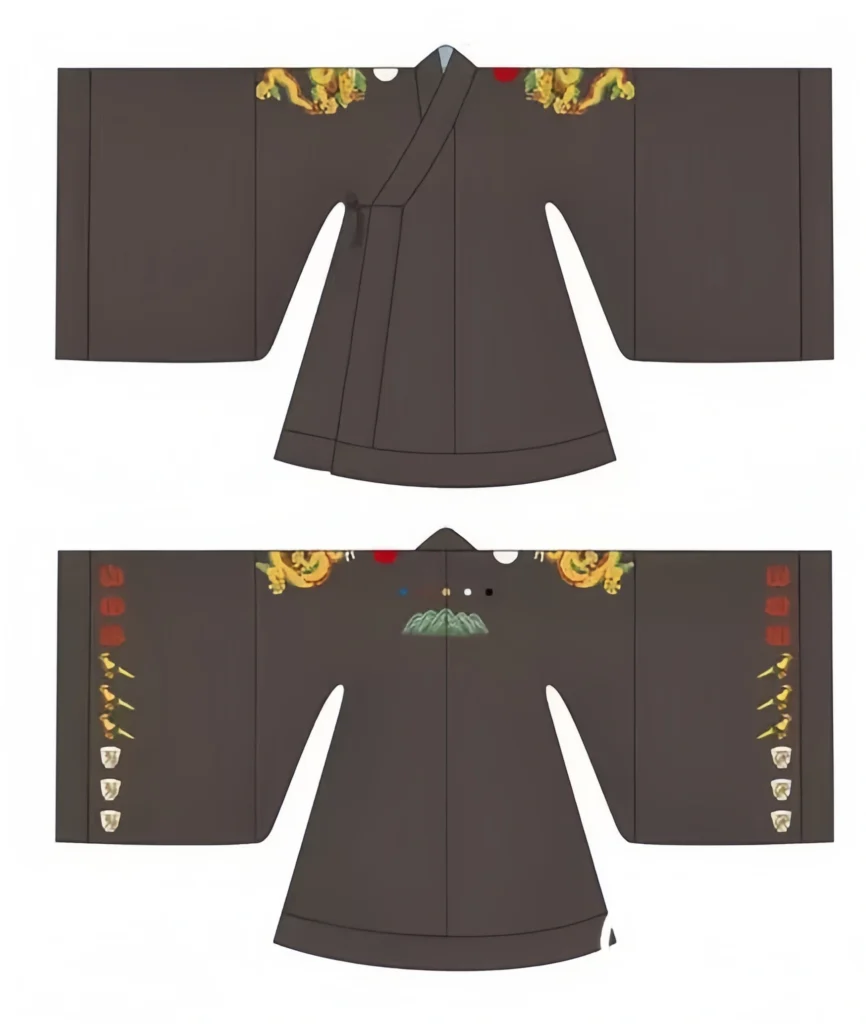
Vermilion Skirt
The lower part, called the vermilion skirt, is reddish-orange, a vital piece of the Ming Dynasty emperor robe, split into two pieces: three panels in front, four in back, joined at the waist. Each panel is folded into pleats to fit the waist. The skirt’s sides and bottom have plain edges—side edges called bi, bottom called xi. It’s decorated with four symbols (two each, in two rows on the front): seaweed (coiled green), rice grains (white, circular), axe (blue or black with white blade), and bow-back (two bows facing away).
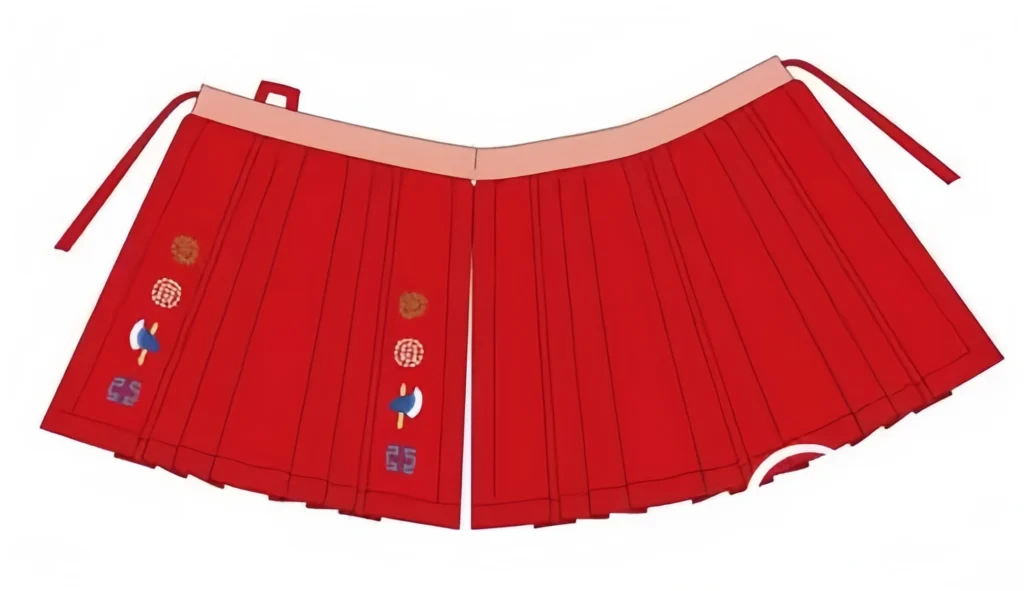
Inner Robe, Knee Cover, Great Belt
The inner robe, made of plain gauze, has a cross collar, big sleeves, and green-edged collar, sleeves, and hem, with thirteen bow-back patterns on the collar.
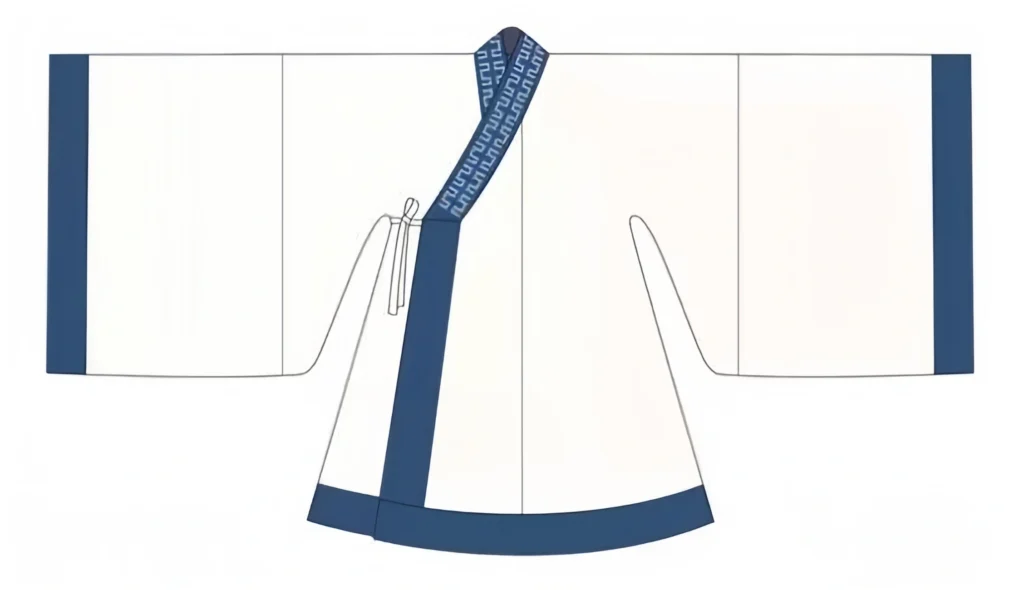
The knee cover, vermilion, is 1 foot wide at the top, 2 feet at the bottom, 3 feet long, with plain edges and five-colored cords at the seams. It has four symbols (seaweed, rice, axe, bow-back, two each in rows) and two jade hooks for hanging. The great belt has a waist part and a hanging part, tied with loops and fake knots. It’s white outside, red inside, with red edges on the waist and knots, green on the hanging part. Long plain silk ribbons, called New York, hang from the knots. Note: Yongle 3 rules for this Ming Dynasty court attire ditched the leather belt, which returned under Jiajing.
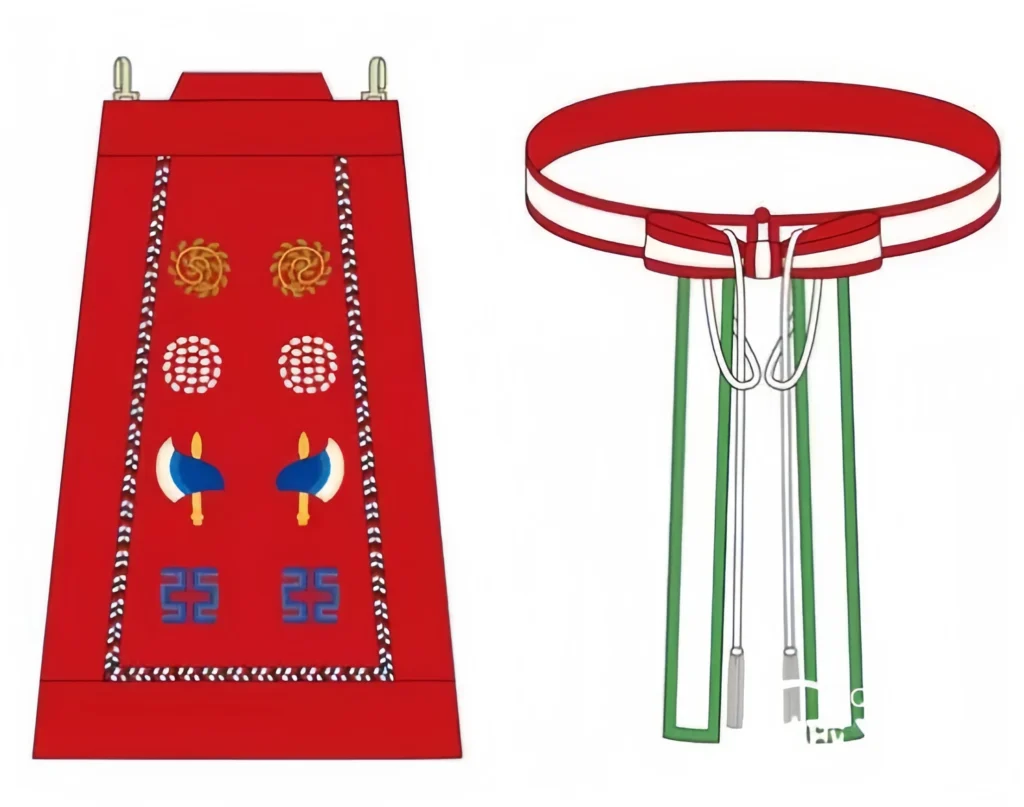
Jade Pendants, Small Ribbons, Large Ribbon
Jade pendants, called “jingling jades,” come in two sets, iconic in Ming Dynasty court attire. Each has: a heng (top piece with one hole for a gold hook, five holes for five jade bead strings), a yu (below heng, three holes top and bottom, tied to three middle strings), a pair of ju (cloud-carved, gold-traced, tied to side strings), a jade flower (below yu, tied to three middle strings), a pair of jade drops (teardrop-shaped, at the ends of side strings), a pair of huang (half-circle, cloud-carved, gold-traced, at side string ends), and a chongya (like heng, at the middle string’s end).
Heng, yu, flower, and chongya have dragon carvings with gold. When moving, the chongya clinks with drops and huang.
Small ribbons below match the large ribbon’s colors and patterns. The large ribbon, rectangular, uses yellow, white, red, black, light blue, and green threads, with diamond patterns at the top and vertical stripes below, lined with vermilion fabric. Six woven ribbons (also called small ribbons, separate from jade ones) hang in three pairs, each with a dragon-carved jade ring.
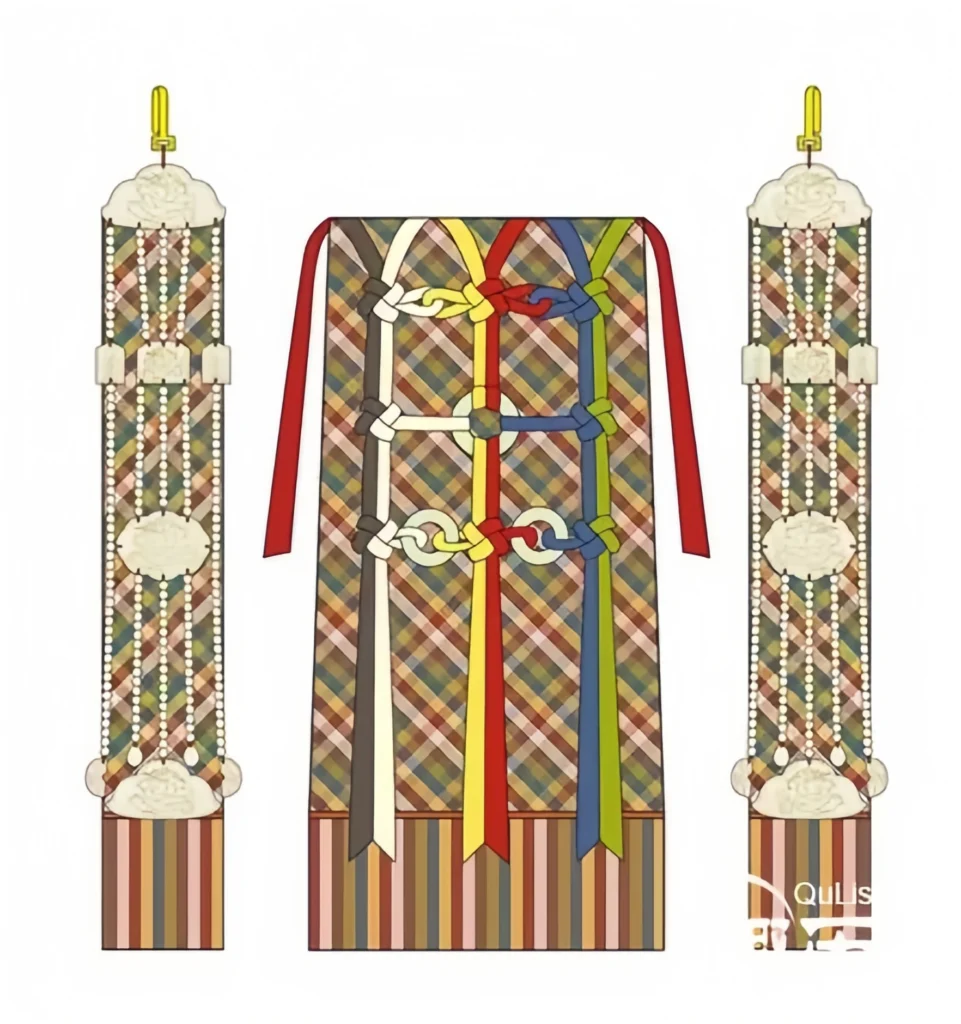
Socks, Shoes, Jade Tablet
Red socks and red shoes, part of Historical Chinese robe designs, are used. The shoes, boot-like, have cloud-shaped toes with yellow cord edges and black ribbon knots, plus black-edged sides. The jade tablet, 1.2 feet long, has a pointed top, flat bottom, four mountain carvings, and a yellow silk cover. A jade tablet bag, shaped like the tablet, has gold dragon patterns and a bottom cover.

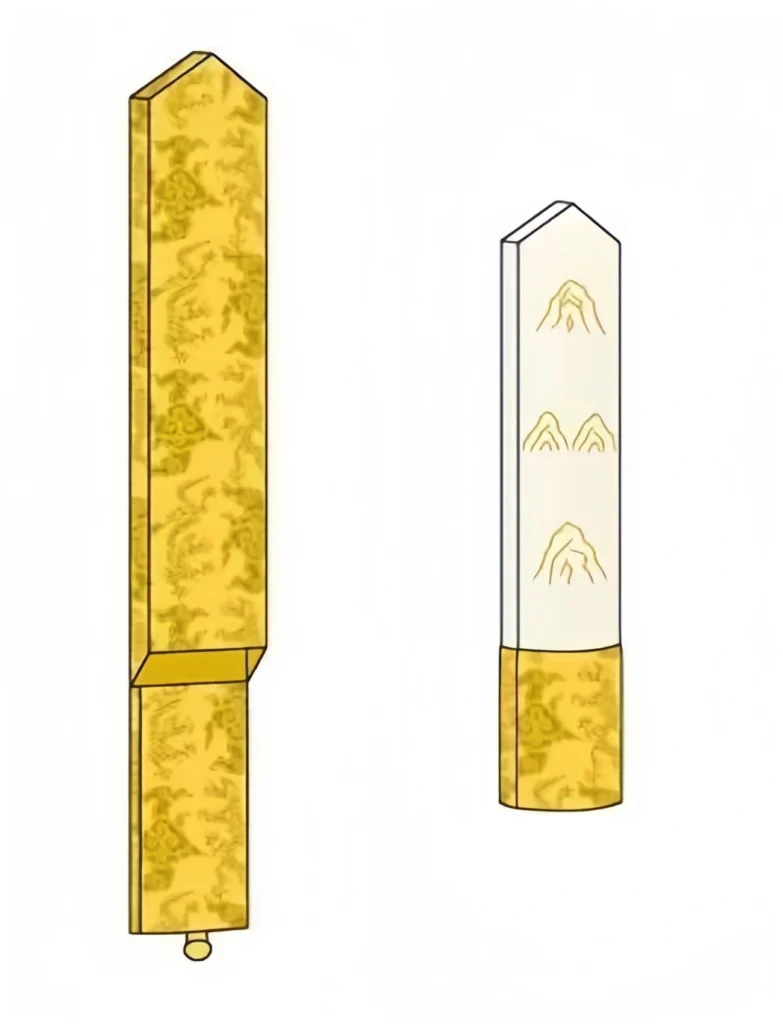
Historical Records
Per Ming Veritable Records, in January 1368, Emperor Hongwu wore the gunmian to worship heaven and earth in Nanjing, naming the dynasty Great Ming and the era Hongwu. In February, scholar Tao An and others suggested five types of crowns for different rituals, but Hongwu found them too complex, settling on gunmian for heaven, earth, and temples, and a simpler crown with red robe for harvest gods.
In November, he ordered officials and scholars to finalize clothing rules. During Jiajing’s reign, after winning the “Great Ritual Debate,” Emperor Jiajing revamped rituals and clothing, including the emperor’s robe, detailed in Great Ming Compendium. Excavations of Emperor Wanli’s Dingling in the 1950s uncovered robe artifacts, offering priceless clues for studying Historical Chinese robe designs. Curious about ritual wear? Explore our traditional Chinese ceremonial clothing guide for more.

Want more Hanfu tips and styling tricks? Check out our Hanfu styling guide for awesome outfit ideas!
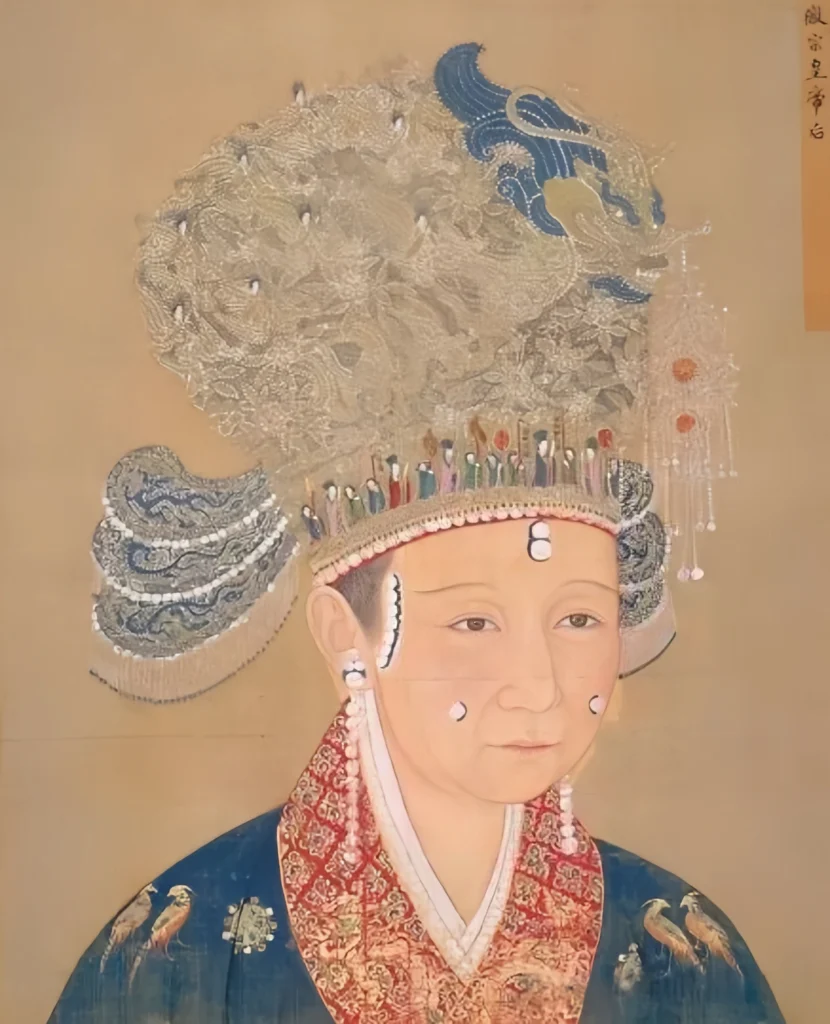



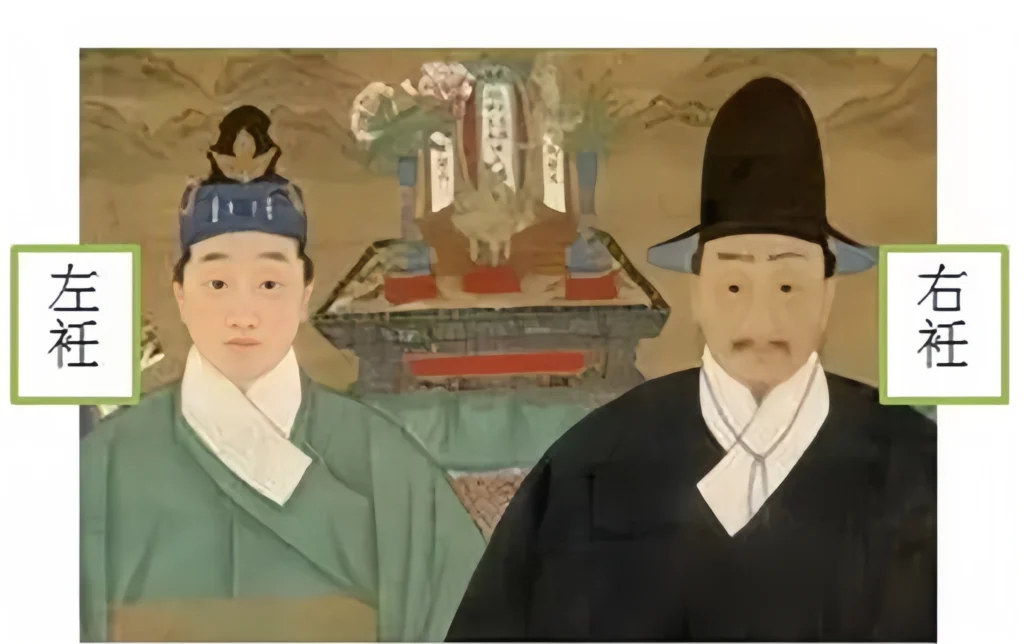
Responses